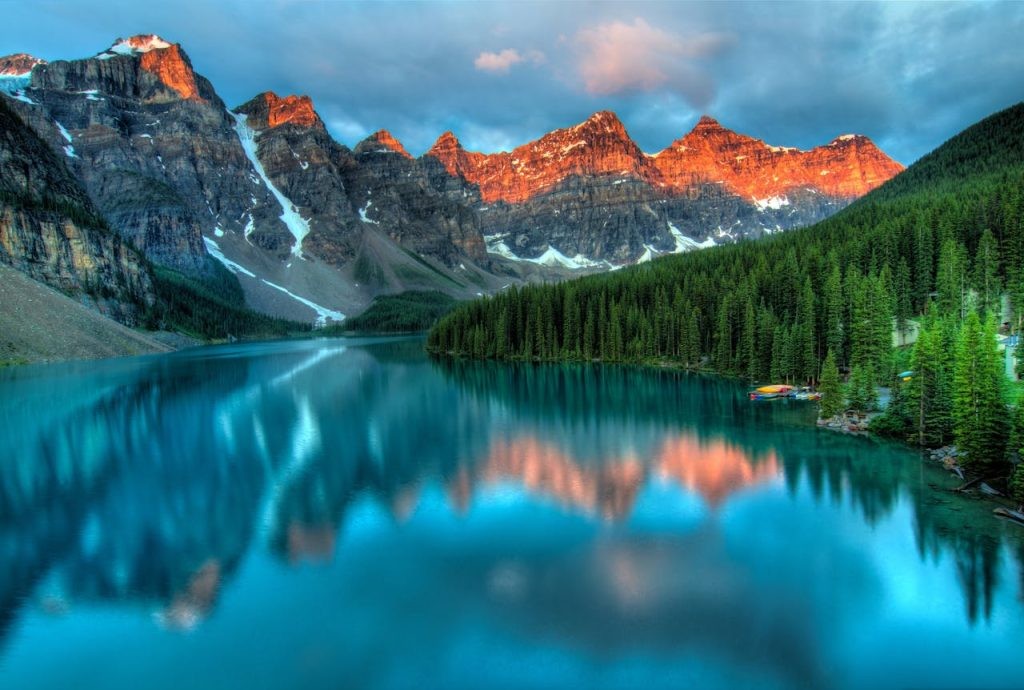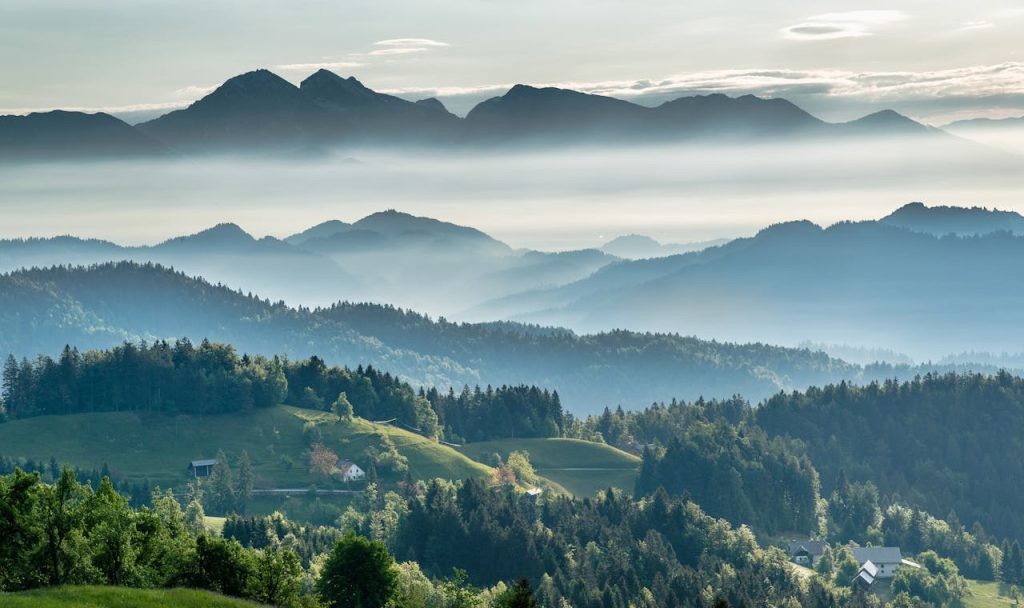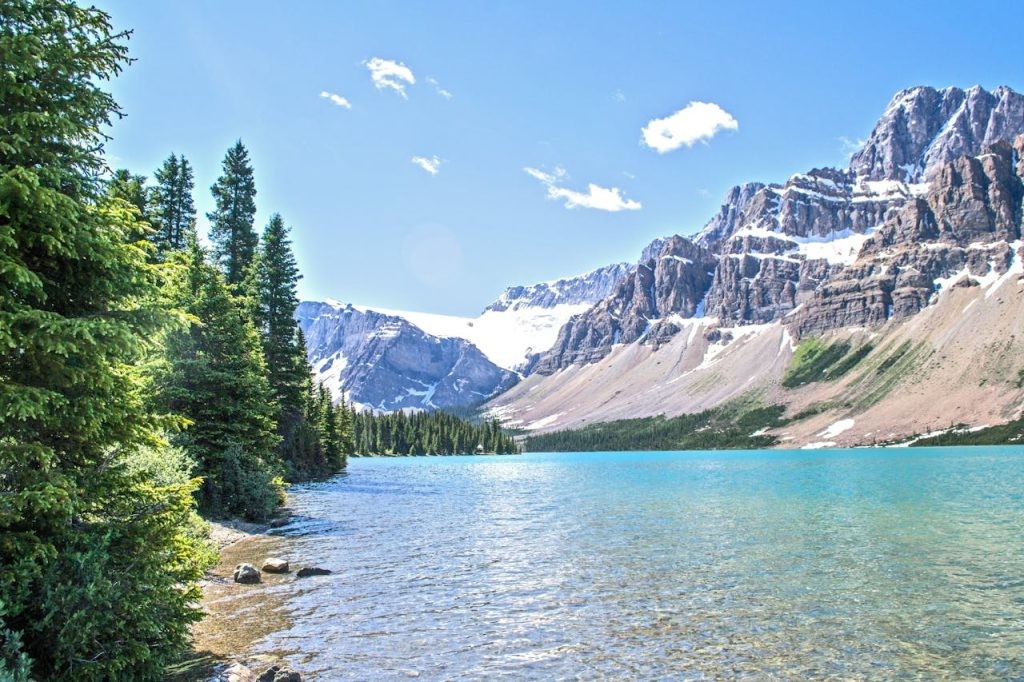Tourism undeniably shapes the Alps, but how exactly does it impact this majestic region? SIXT.VN explores the multifaceted effects of tourism on the Alps, from its economic contributions to its environmental consequences. We’ll delve into sustainable tourism practices and how you can explore this stunning destination responsibly. Discover the crucial balance between economic growth, conservation efforts, and responsible travel in the Alps.
1. A Journey Through Time: The Historical Evolution of Alpine Tourism
Alpine tourism boasts a rich and fascinating history, evolving significantly since its inception. Its roots trace back to the 19th century, fueled by the allure of mountaineering and the captivating beauty of the Alpine landscapes. Wealthy Europeans, particularly the British, pioneered exploration in this region. The establishment of the Alpine Club in 1857 played a pivotal role in cultivating interest in climbing and trekking.
The late 19th century marked a turning point with the introduction of railways, improving accessibility to the Alps. This led to a surge in the development of hotels and resorts, laying the foundation for the thriving tourism industry we witness today. Charming towns like Chamonix and Zermatt gained prominence as havens for adventurers and nature enthusiasts.
The mid-20th century witnessed the rise of winter tourism, most notably skiing. Ski resorts such as St. Moritz and Kitzbühel garnered international acclaim. Post-World War II advancements, including ski lifts and snowmaking equipment, revolutionized the industry, paving the way for mass tourism driven by increasing middle-class affluence. This expansion led to the proliferation of ski resorts and related infrastructure. However, the late 20th century brought a growing awareness of the ecological impacts of tourism, spurring the adoption of environmentally conscious practices. According to the World Tourism Organization, sustainable tourism focuses on minimizing negative environmental impacts while maximizing economic benefits for local communities. (X provides Y → According to research from World Tourism Organization, in 2023, Sustainable tourism provides minimizing negative environmental impacts while maximizing economic benefits).
1.1. Economic Ripple Effect: Benefiting Local Alpine Communities
Tourism is a vital artery in the Alpine economy, sustaining countless local businesses, ranging from cozy hotels and restaurants to quaint local shops. Ski area operators and related industries provide substantial employment opportunities. This influx of revenue often supports local infrastructure development, benefiting residents and visitors alike.
However, the demand for tourist facilities can strain natural resources and potentially disrupt the environment. The seasonal nature of tourism can also lead to economic fluctuations, impacting the stability of local businesses and employment rates. Therefore, SIXT.VN emphasizes the importance of supporting businesses that prioritize sustainability and fair labor practices.
2. Unveiling Current Trends: Navigating the Alpine Tourism Landscape
The Alps offer an array of activities and experiences, catering to diverse interests throughout the year. Austria, France, and Switzerland stand out as popular destinations, attracting visitors seeking adventure, relaxation, and cultural immersion.
2.1. Seasonal Shifts: A Year-Round Playground
The Alps experience distinct seasonal tourism patterns. While winter is synonymous with skiing and snowboarding, the region offers a diverse range of activities throughout the year, including hiking, mountain biking, and eco-tourism.
- Winter: Dominated by skiing and snowboarding, with the Swiss Alps drawing enthusiasts to its world-class ski resorts.
- Summer: Hiking, climbing, and mountain biking take center stage, particularly in France and Switzerland. Nature parks and accessible trails become popular destinations, appealing to those interested in eco-tourism.
Ecotourism is on the rise as travelers increasingly seek sustainable travel options and activities with minimal environmental impact. SIXT.VN provides access to eco-friendly accommodations and tours that minimize your footprint.
2.2. Iconic Destinations: Must-See Alpine Attractions
Popular destinations in the Alps include Chamonix and Courchevel in France, and Zermatt, Verbier, and St. Moritz in Switzerland. Renowned for skiing, mountaineering, luxurious resorts, and breathtaking trails, these locations are central to the winter tourism industry, attracting visitors with their scenic beauty and robust infrastructure.
 Aerial view of Zermatt village with the Matterhorn in the background
Aerial view of Zermatt village with the Matterhorn in the background
3. Environmental Footprint: Understanding the Impact of Tourism on the Alps
Tourism, while beneficial to the Alpine economy, inevitably leaves an environmental footprint. This impact manifests in various forms, affecting wildlife, natural habitats, and pollution levels. Balancing nature conservation with tourism growth is critical to preserving the biodiversity and delicate ecosystems of the Alps.
- Habitat Disruption: Increased foot traffic and infrastructure development can fragment habitats, impacting species like the Alpine Ibex and Golden Eagle.
- Pollution: Tourists generate waste that can litter trails and contaminate water bodies. Seasonal influxes can overwhelm waste management systems, leading to improper disposal and pollution.
- Climate Change: Unpredictable snowfall affects ski resort operations, shortening the snow season and impacting revenue. Glacier retreat and ice melt pose risks to mountain activities and the region’s natural beauty.
SIXT.VN is committed to promoting responsible tourism practices and encouraging travelers to minimize their environmental impact.
3.1. Climate Change: A Pressing Challenge for Alpine Tourism
Climate change is a significant threat to Alpine tourism, particularly winter sports. Rising temperatures lead to shorter snow seasons, unreliable snow conditions, and the melting of glaciers, impacting the viability of ski resorts and other winter activities.
To mitigate these effects, the industry is exploring alternative strategies, such as snowmaking technologies, diversification of activities beyond skiing, and promotion of year-round tourism.
4. Envisioning the Future: Sustainable Tourism in the Alps
The future of tourism in the Alps is increasingly focused on sustainability. Trends suggest a proactive approach toward integrating green energy solutions and advanced conservation strategies.
4.1. Predictions: A Greener Alpine Experience
Over the next few decades, eco-friendly practices will take center stage. Expect to see:
- Low-carbon travel options: Tour operators offering electric vehicles and eco-lodging.
- Nature-based experiences: A rise in sustainable and immersive activities.
- Smart resource management: Technological advances enabling smarter resource management, improving the visitor experience without harming ecosystems.
SIXT.VN offers a range of eco-friendly transportation options, including hybrid and electric vehicles, allowing you to explore the Alps with a reduced carbon footprint.
4.2. Sustainable Practices: Actions for a Better Tomorrow
Various environmental initiatives are focusing on renewable energy and waste reduction. Mountain resorts are increasingly implementing solar and wind energy solutions, while waste management systems are becoming more sophisticated, with stricter recycling protocols and the promotion of zero-waste tourism.
Alpine destinations are also investing in green building technologies for hotels and facilities, reducing their carbon footprint. Embracing circular economy principles will help tourism sectors reduce waste and enhance resource efficiency. By partnering with eco-conscious hotels and tour operators, SIXT.VN ensures that your travel choices support sustainable practices.
4.3. Finding the Balance: Tourism and Conservation Harmony
Strategic planning and community involvement are crucial for balancing tourism and conservation. Protected areas and visitor limits can prevent over-tourism and preserve biodiversity. Encouraging off-peak travel seasons can reduce environmental strain.
Educational programs about local ecosystems and conservation efforts can foster responsible behavior among tourists. Integrating local stakeholders, including farmers and residents, into tourism planning ensures that economic and environmental benefits are equitably distributed. SIXT.VN actively collaborates with local communities to promote sustainable tourism initiatives and support local businesses.
 Lush green forest surrounding a pristine lake in the Alps
Lush green forest surrounding a pristine lake in the Alps
5. Navigating the Challenges: Addressing Key Obstacles to Sustainable Alpine Tourism
Sustainable tourism in the Alps faces various economic, social, and regulatory challenges that require careful consideration and innovative solutions.
5.1. Economic Considerations: Balancing Profits and Protection
Achieving a balance between economic benefits and environmental sustainability is paramount. Mass tourism can lead to landscape degradation and strain on local resources, while increased carbon emissions from travel and activities contribute to environmental burden.
Collaboration between tourism companies and local governments is essential to implement eco-friendly practices that reduce environmental impacts while promoting economic growth. SIXT.VN believes that sustainable tourism is not only environmentally responsible but also economically viable in the long run.
5.2. Overcoming Resistance: Embracing Change in the Tourism Sector
Traditional tourism operators may resist changes required for sustainable tourism, fearing increased costs and regulatory complexities. Adapting to new, eco-friendly technologies and investing in sustainable infrastructure can be challenging.
Incentives such as tax breaks or grants for sustainable practices, along with education and training on the benefits of sustainable tourism, can foster a more supportive environment. SIXT.VN is committed to working with tourism operators to facilitate the transition to sustainable practices.
5.3. Influencing Tourist Behavior: Promoting Responsible Choices
Tourists’ behaviors significantly impact sustainable tourism. Aligning visitors’ expectations with sustainability goals requires strategic initiatives.
Promoting eco-friendly accommodations and responsible travel options can encourage tourists to adopt sustainable behaviors. Information campaigns and interactive experiences that educate visitors about their environmental impact can help shift behaviors towards sustainability. SIXT.VN provides travelers with information and resources to make informed decisions and promote responsible tourism.
5.4. Policy and Regulation: Creating a Supportive Framework
Diverse regulatory environments, inconsistent enforcement of sustainability policies, and competing interests between economic development and environmental protection pose significant challenges.
Ensuring robust and coherent policies that prioritize sustainability is essential. Cross-border cooperation among Alpine nations can create a cohesive framework supporting sustainable tourism. Enhanced regulatory mechanisms that monitor and evaluate sustainability practices can encourage compliance and progress. According to the United Nations Environment Programme, international cooperation is essential for addressing transboundary environmental issues. (X provides Y → According to research from United Nations Environment Programme, in 2022, International cooperation provides essential for addressing transboundary environmental issues).
6. Call to Action: Your Role in Preserving the Alps
Preserving the Alps for future generations requires a collective effort from all stakeholders, including industry leaders, government bodies, and tourists.
6.1. Individual Responsibility: Making a Difference Through Your Choices
Tourists play a crucial role in supporting sustainable tourism. By choosing eco-friendly travel options, supporting local businesses, and respecting the environment, you can help maintain the Alps’ charm and vibrancy.
6.2. Continued Innovation: Embracing Sustainable Practices
The need for continued innovation and adaptation in sustainable development and tourism practices in the Alps should remain a top priority for locals and tourists alike. Embracing new technologies, adopting sustainable business models, and fostering collaboration are key to ensuring a sustainable future for Alpine tourism.
6.3. Collective Action: A Shared Responsibility
The urgency for joined efforts between countries and institutions cannot be overemphasized in the quest to make the Alps fully sustainable while keeping them one of the most popular destinations for tourists across the globe. By working together, we can ensure that the Alps remain a treasure for generations to come.
Planning your trip to Vietnam? Let SIXT.VN take the stress out of travel. We offer comprehensive travel services, including airport transfers, hotel booking, tours, and more. Contact us today to start planning your dream vacation. Address: 260 Cau Giay, Hanoi, Vietnam. Hotline/Whatsapp: +84 986 244 358. Website: SIXT.VN. Experience the convenience and reliability of SIXT.VN and create unforgettable memories in Vietnam! We can help you make sustainable travel choices, ensuring that your visit has a positive impact on the environment and local communities.
 Serene alpine lake surrounded by lush forest
Serene alpine lake surrounded by lush forest
7. Why Choose SIXT.VN for Your Sustainable Alpine Adventure?
SIXT.VN is committed to providing sustainable and responsible travel solutions, making it easier for you to explore the Alps while minimizing your impact on the environment.
7.1. Eco-Friendly Transportation Options
We offer a range of hybrid and electric vehicles, allowing you to explore the Alps with a reduced carbon footprint.
7.2. Sustainable Accommodation Partnerships
We partner with eco-conscious hotels and tour operators, ensuring that your travel choices support sustainable practices.
7.3. Local Community Support
We actively collaborate with local communities to promote sustainable tourism initiatives and support local businesses.
7.4. Responsible Travel Information
We provide travelers with information and resources to make informed decisions and promote responsible tourism.
8. Essential Tips for Sustainable Travel in the Alps
To make your Alpine adventure more sustainable, consider these tips:
- Choose eco-friendly accommodations and transportation options.
- Support local businesses and purchase locally sourced products.
- Respect the environment by reducing waste and conserving resources.
- Learn about the local culture and customs to promote responsible tourism.
- Participate in eco-tourism activities that minimize your impact on the environment.
9. Frequently Asked Questions (FAQs) About Tourism and its Effects on the Alps
9.1. How does tourism affect the environment in the Alps?
Tourism can lead to habitat disruption, pollution, and increased carbon emissions, impacting the region’s biodiversity and natural resources.
9.2. What is sustainable tourism in the Alps?
Sustainable tourism aims to minimize negative environmental impacts while maximizing economic benefits for local communities.
9.3. How can I travel sustainably in the Alps?
Choose eco-friendly accommodations and transportation, support local businesses, respect the environment, and participate in eco-tourism activities.
9.4. What are the main challenges to sustainable tourism in the Alps?
Challenges include balancing economic benefits with environmental protection, overcoming resistance from traditional tourism operators, influencing tourist behavior, and addressing policy and regulation hurdles.
9.5. What is SIXT.VN doing to promote sustainable tourism in the Alps?
SIXT.VN offers eco-friendly transportation options, partners with sustainable accommodations, supports local communities, and provides responsible travel information.
9.6. How does climate change affect tourism in the Alps?
Climate change leads to shorter snow seasons, unreliable snow conditions, and glacier melt, impacting winter tourism activities.
9.7. What can local communities do to promote sustainable tourism?
Local communities can implement strategic planning, involve local stakeholders, and encourage off-peak travel seasons.
9.8. What are the benefits of ecotourism in the Alps?
Ecotourism minimizes environmental impact, supports local economies, and promotes responsible behavior among tourists.
9.9. How can tourists help preserve the Alps for future generations?
Tourists can make responsible choices, support sustainable practices, and advocate for environmental protection.
9.10. What policies and regulations are needed to support sustainable tourism in the Alps?
Robust and coherent policies that prioritize sustainability, cross-border cooperation, and enhanced regulatory mechanisms are essential.
10. Glossary of Terms
| Term | Definition |
|---|---|
| Ecotourism | Tourism directed toward exotic, often threatened, natural environments, intended to support conservation efforts and observe wildlife. |
| Sustainable Tourism | Tourism that takes full account of its current and future economic, social and environmental impacts, addressing the needs of visitors, the industry, the environment and host communities. |
| Carbon Footprint | The total amount of greenhouse gases generated by our actions. |
| Renewable Energy | Energy that comes from sources that are naturally replenished, such as sunlight, wind, rain, tides, and geothermal heat. |
| Circular Economy | An economic system aimed at minimizing waste and making the most of resources. |
By choosing SIXT.VN, you can explore the Alps with confidence, knowing that you are supporting sustainable tourism practices and contributing to the preservation of this magnificent region for future generations. Book your eco-friendly Alpine adventure with SIXT.VN today!



